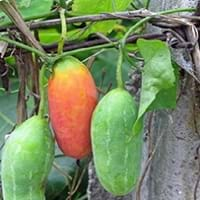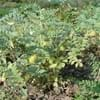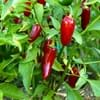Life Span
Annual
Perennial
Type
Vegetable
Fruit, Tree
Origin
India, Philippines, Southeast Asia
Not Available
Types
Not Available
Not Available
Habitat
Loamy soils, Moist Soils, Subtropical climates
Forests, gardens, Hill prairies, Homesteads, Rocky areas, Woodlands
USDA Hardiness Zone
5-7
Not Available
AHS Heat Zone
12-1
Not Available
Sunset Zone
A1, A2, A3, H1, H2, 1a, 1b, 2a, 2b, 3a, 3b, 4, 5, 6, 7, 8, 9, 10, 11, 12, 13, 14, 15, 16, 17, 18, 19, 20, 21, 22, 23, 24
Not Available
Habit
Vining/Climbing
Bushy, Evergreen
Flower Color
Yellow, Orange, Dark Green
Light Green, Lime Green
Flower Color Modifier
Bicolor
Not Available
Fruit Color
Yellow, Dark Green
Green, Light Green
Leaf Color in Spring
Green, Dark Green
Yellow, Green, Gray Green
Leaf Color in Summer
Green, Dark Green
Light Green
Leaf Color in Fall
Green, Dark Green
Yellow, Green, Gray Green
Leaf Color in Winter
Not Available
Yellow, Green, Gray Green
Plant Season
Summer, Fall
Spring, Summer, Fall, Winter
Sunlight
Full Sun
Full Sun, Partial Sun, Partial shade
Growth Rate
Very Fast
Fast
Type of Soil
Loam, Sand
Loam, Sand
The pH of Soil
Neutral
Acidic, Neutral, Alkaline
Soil Drainage
Well drained
Well drained
Bloom Time
Indeterminate
Early Summer, Summer, Late Summer, Early Fall
Tolerances
Drought
Pollution, Salt, Soil Compaction
Where to Plant?
Ground
Ground
How to Plant?
Seedlings
Seedlings, Stem Cutting, Stem Planting
Plant Maintenance
Medium
Low
Watering Requirements
Requires regular watering, Water daily during growing season
Keep ground moist, Requires regular watering, Use Mulches to help prevent water loss during hot and windy weather
In Summer
Lots of watering
Lots of watering
In Spring
Moderate
Moderate
In Winter
Average Water
Average Water
Soil pH
Neutral
Acidic, Neutral, Alkaline
Soil Type
Loam, Sand
Loam, Sand
Soil Drainage Capacity
Well drained
Well drained
Sun Exposure
Full Sun
Full Sun, Partial Sun, Partial shade
Pruning
Cut out old flower stalks, Prune after flowering, Remove crossing or rubbing branches, Remove dead or diseased plant parts
Cut or pinch the stems, Do not prune during shooting season, Remove deadheads
Fertilizers
Apply 10-10-10 amount, Apply 12-12-12 amounts, Phosphate
High Potash Fertilizer
Pests and Diseases
Aphids, Army-worms, Bacteria wilt, Bacterial leaf spot, Blight, Cucumber beetles, Cutworms, Fusarium leaf spot, Red spider mite
Bacterial Blight, Foliage-feeding caterpillars, Moth
Plant Tolerance
Drought, Full Sun, Salt and Soil Compaction
Pollution, Salt and Soil Compaction
Flower Petal Number
Single
Single
Foliage Texture
Coarse
Fine
Foliage Sheen
Matte
Matte
Attracts
Bees, Flies, Flying insects
Caterpillar
Allergy
Hypoglycaemic Coma, Irregular Heart Rhythm, Miscarriage
Skin irritation
Aesthetic Uses
Not Used For Aesthetic Purpose
Not Used For Aesthetic Purpose
Beauty Benefits
Anti-ageing, For treating wrinkles, Nourishes scalp, Remove blemishes
Blood purifying, Glowing Skin, Good for skin and hair, Provides herbal hair care, Speed hair growth
Environmental Uses
Food for animals
Air purification, soil stabilisation
Medicinal Uses
Anti-fungal, Diabetes, Fever, Gastrointestinal disorders, Jaundice, Leprosy, Scabies, Weight loss
Atherosclerosis, Cancer, Diabetes, Diarrhea, High blood pressure, High cholestrol, Obesity, Vitamin C
Part of Plant Used
Fruits
Fruits
Other Uses
Cosmetics, Repellent, Use in Chinese herbology
Making Shampoo, Used for its medicinal properties, Used in herbal medicines
Used As Indoor Plant
No
No
Used As Outdoor Plant
Yes
Yes
Garden Design
Dried Flower/Everlasting, Vine
Cottage garden
Botanical Name
Coccinia grandis
Phyllanthus emblica
Common Name
baby watermelon, little gourd, tindora, tendli
Indian Gooseberry, Amla , Awala
In Hindi
तेंडली, कुंदुरी
आमला
In German
Tindola,
Efeu Kürbis
Stachelbeere
In French
Ivy gourd
Groseille à maquereau
In Spanish
Ivy gourd
Grosella
In Greek
Ivy gourd
Φραγκοστάφυλλο
In Portuguese
Ivy gourd
Groselha
In Polish
Ivy gourd
Agrest
In Latin
Ivy gourd
hominem
Phylum
Magnoliophyta
Magnoliophyta
Class
Magnoliopsida
Magnoliopsida
Order
Cucurbitales
Malpighiales
Family
Cucurbitaceae
Phyllanthaceae
Genus
Coccinia
Phyllanthus
Clade
Angiosperms, Eudicots, Rosids
Angiosperms, Eudicots, Rosids
Tribe
Not Available
Phyllantheae
Subfamily
Papilionoideae
Not Available
Number of Species
Not Available
Importance of Ivy Gourd and Indian Gooseberry
Want to have the most appropriate plant for your garden? You might want to know the importance of Ivy Gourd and Indian Gooseberry. Basically, these two plants vary in many aspects. Compare Ivy Gourd and Indian Gooseberry as they differ in many characteristics such as their life, care, benefits, facts, etc. Every gardener must at least have the slightest clue about the plants he wants to plant in his garden. Compare their benefits, which differ in many ways like facts and uses. The medicinal use of Ivy Gourd is Anti-fungal, Diabetes, Fever, Gastrointestinal disorders, Jaundice, Leprosy, Scabies and Weight loss whereas of Indian Gooseberry is Atherosclerosis, Cancer, Diabetes, Diarrhea, High blood pressure, High cholestrol, Obesity and Vitamin C. Ivy Gourd has beauty benefits as follows: Anti-ageing, For treating wrinkles, Nourishes scalp and Remove blemishes while Indian Gooseberry has beauty benefits as follows: Anti-ageing, For treating wrinkles, Nourishes scalp and Remove blemishes.
Compare Facts of Ivy Gourd vs Indian Gooseberry
How to choose the best garden plant for your garden depending upon its facts? Here garden plant comparison will help you to solve this query. Compare the facts of Ivy Gourd vs Indian Gooseberry and know which one to choose. As garden plants have benefits and other uses, allergy is also a major drawback of plants for some people. Allergic reactions of Ivy Gourd are Hypoglycaemic Coma, Irregular Heart Rhythm and Miscarriage whereas of Indian Gooseberry have Skin irritation respectively. Having a fruit bearing plant in your garden can be a plus point of your garden. Ivy Gourd has showy fruits and Indian Gooseberry has showy fruits. Also Ivy Gourd is not flowering and Indian Gooseberry is not flowering . You can compare Ivy Gourd and Indian Gooseberry facts and facts of other plants too.





